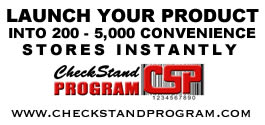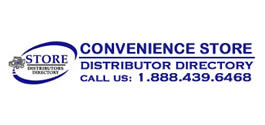Marketing for a Wholesale Grocery Business
Marketing for a Wholesale Grocery Business
Marketing is necessary for any business. The methods vary depending on the nature of the business but all businesses need it irrespective of their size and the sector. Marketing for a wholesale grocery business is based on the dynamics of the sector as well as the type and nature of the individual businesses. Here are some tips for marketing a wholesale grocery business.
Define the marketing plan
Before making a marketing plan it is important to define and refine the strategy for the same. Whether you are formulating a plan for a new business or refining the marketing strategy of an existing business, making a checklist of the areas to focus can help a great deal. This narrow focus on important points is the key to a successful marketing plan and a successful business.
- Define your business. Define the products your sell. Do you deal in only food items or other household products as well? What type of food you sell or intend to sell? Even if your answer is as simple as ‘bread’ – write it down as it helps to narrow the focus. Then identify what type of bread you wish to sell. There is a huge variety of breads in the market these days – from plain bread to wholegrain variety to gluten-free and many types of gourmet breads. Each type of bread will need a different marketing plan as the target audience is different for different breads.
- Also see if your products are different from what is currently available in the market. Will you be selling what is already selling in the market and be a part of the existing competition? Or will you source your product from a new vendor who has also just entered into the market? Buying from new manufacturers or vendors can give you an edge as you might have products to sell that are not in the market yet. Or you might wish to try for a product range that is a mix of existing and new types of products. Your bread products can include the usual varieties that regularly sell in the market and include breads that introduce new flavors in the market.
- This brings us to the point regarding target audience. Identify the end-users of your products as this will help you reach the right convenience stores for your business. The demographics of a location and the type of convenience store are the two factors to consider here.
- Now think how the above points help you with refine your marketing plan even more. The market competition in your chosen product category helps here to determine how aggressive your marketing needs to be. Also to consider are things like how you want to position your business. In other words do you want to become a market leader in your product category? Or do you want to launch new products? For instance, do you want to introduce new types of gourmet breads in the convenience stores or you are happy to sell the breads that are already selling in the market?
- Also consider the size of the market. How many convenience stores you want to cover at the start? What market size is already covered by your competitors? Do you want to reach out to newer markets or stick to existing stores already served by your competition? To continue with our example of breads here – do you wish to only sell to few convenience stores or do you wish to sell a few varieties of breads including gourmet breads and enter new markets like restaurants and high-end stores.
Formulate the marketing plan
Now comes the part of devising a plan based on the above factors. Once you know your products and how you can position your business given the current situation in the market or the competition existing in the market, you can make your marketing plan that will take into account all the factors that influence or might influence your wholesale grocery business.
- First thing to do here is to think over the pricing of your products. Do you wish to price your bread lower than your competitors’ pricing or keep the price a tad lower so as to beat the competition? Or on the other hand, are you so confident of your products that you decide to price them above the existing competition? Or on a neutral front, you price the products just as your completion in the market.
- Think beforehand how you plan to tackle price fluctuations in the market. These fluctuations are a normal part of any business. Rise or fall in price of a single ingredient can affect the cost of the final product. Say for instance, you buy multigrain bread from a vendor at a certain price, but the price of sorghum flour rises due to some reason.
So if your multi-grain bread has sorghum flour as one of your ingredients then this will affect the cost of the multi-grain bread. Now here you will need to decide whether you are in a position to charge more from the retail stores or you will need to bear the cost yourself? A new business or a business in a very competitive market needs to regularly take such decisions. Having a contingency plan in mind beforehand to handle price fluctuations can help a great deal when suddenly you are faced with such a situation.
- How do you plan to reach your target market? If this is a new business for you then how do you plan to reach out to convenience stores and have you decided on the stores? Have you made flyers to distribute that list your product range and the unique qualities of your products? Do you think you will need a website to promote your business? Do you have the funds in your marketing budget for a website? How you present your business and make the first contact with your clients are important factors in any marketing plan.






